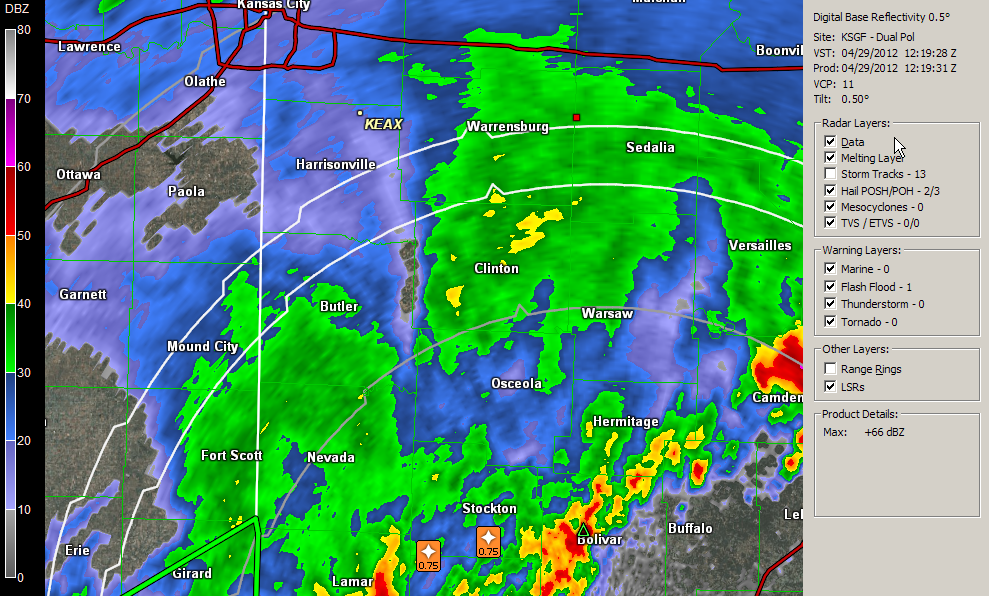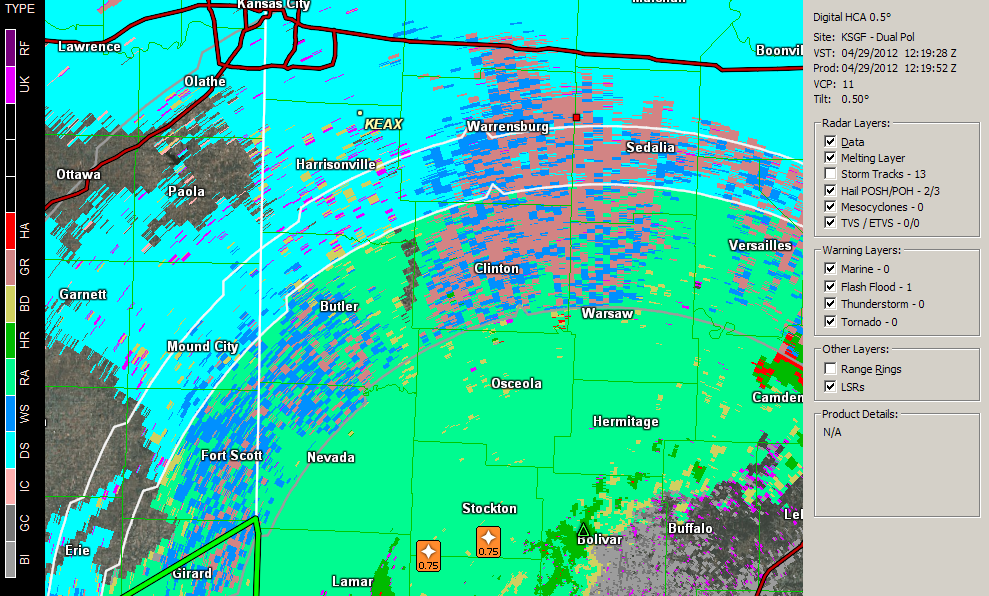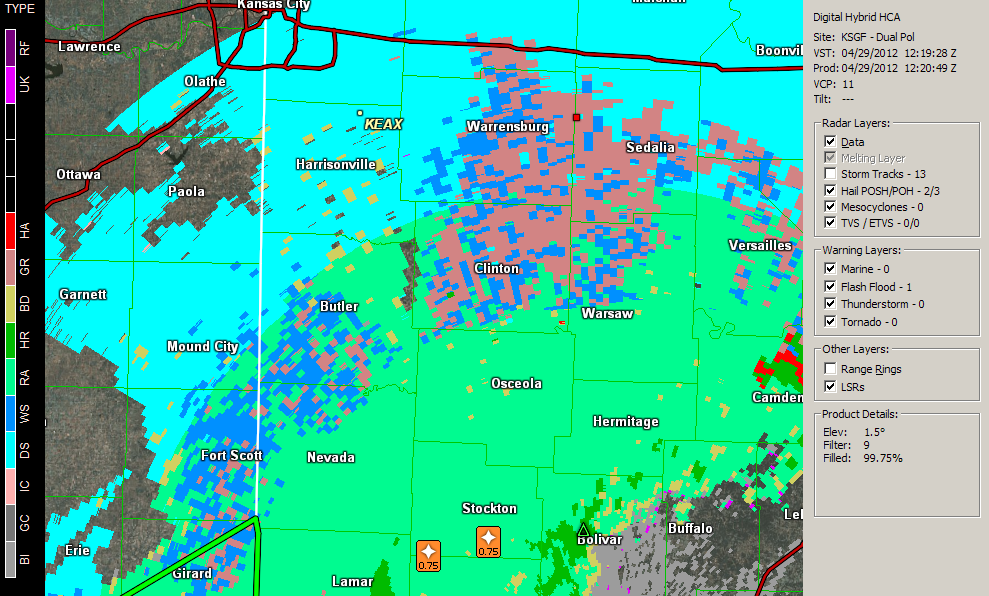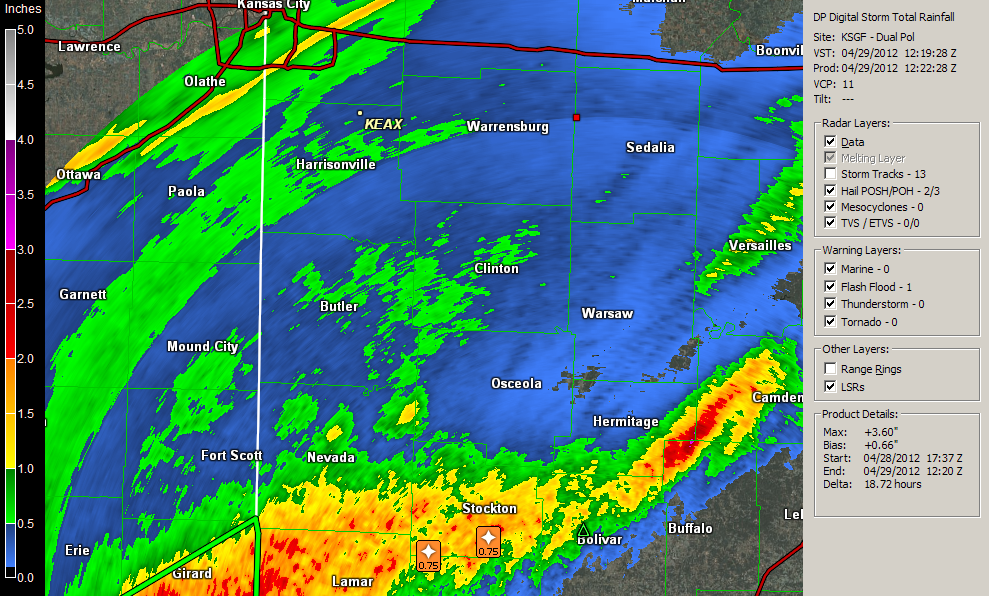
The HCA is a complex algorithm performed by the NEXRAD that attempts to determine the most likely type of the echoes in the radar beam. It combines several base moments (reflectivity, velocity, ZDR, CC, KDP) with the environmental data (the Melting Layer levels) to produce 10 hydrometeor types:
| HA | Hail |
| GR | Graupel |
| BD | Big Drops |
| HR | Heavy Rain |
| RA | Rain |
| WS | Wet Snow |
| DS | Dry Snow |
| IC | Ice Crystals |
| GC | Ground Clutter |
| BI | Biological |
The most important thing to remember about the HCA is that it is an estimate of the type of hydrometeors at the height of the radar beam, not the type of precipitation you would see on the ground. Since the radar beam is at an angle to the ground, its height increases with distance from the radar site. Eventually, even the lowest tilt will enter the melting layer. This results in a ring-like structure of type classes centered on the radar site.
I strongly recommend watching the WDTB presentations on Dual Pol so that you can better understand the HCA, how its types are determined, and its limitations:
http://wdtb.noaa.gov/courses/dualpol/index.html
A specific example will show the the HCA in action and its effect on the Dual Pol derived rainfall products. Here's the 0.5° base reflectivity overlaid with its Melting Layer:

You'll note that in this example the reflectivity is largely independent of the position of the melting layer, i.e. there is no significant change as the levels are crossed. The thick white lines show where the center of the beam enters and exits the melting layer. The two gray lines show where the beam top enters the melting layer and where the beam bottom leaves the melting layer. These levels are used to rule in or rule out specific HCA types.
Here's the 0.5° HCA output:

There is a stark contrast in types as the melting layer is crossed. When the beam is completely below the ML (the inner gray ring) only liquid and HA are allowed types. Once the beam top enters the ML (the inner gray ring), WS and GR are added to the mix. When the beam center enters the ML (the inner white ring), all liquid types except for BD are dropped and DS+IC are allowed.
At the end of a volume scan, all tilts of the HCA are processed and a Hybrid HCA (HHC) product is produced. Here is the HHC for this example:

Since this is a volume product, the ML rings aren't displayed. However, it is easy to see where the various ML rings would appear. The HHC is used to feed type information into the Dual Pol rainfall algorithms, where it significantly affects the rainfall estimates.
Dual Pol NEXRADs produce two rainfall products: the legacy rainfall product and the new Dual Pol rainfall product. Here is the Dual Pol Storm Total Rainfall product for the volume in this example:

The HCA types are used to convert the reflectivity values into rainfall estimates. Note the red marker near the top of the radar display. It shows where the beam center is above the ML. You can see a "ring" in the rainfall estimate there due to the change in the allowed types.
The NEXRAD also produces a product that shows the difference between the DP rainfall products and their legacy counterparts. Here is the Storm Total Rainfall difference product (DSD) for the volume scan we're examining:

This product is defined as (Dual_Pol_rainfall - Legacy_Rainfall), so the positive/red areas indicate the DP algorithm had a higher rainfall estimate than the legacy algorithm.